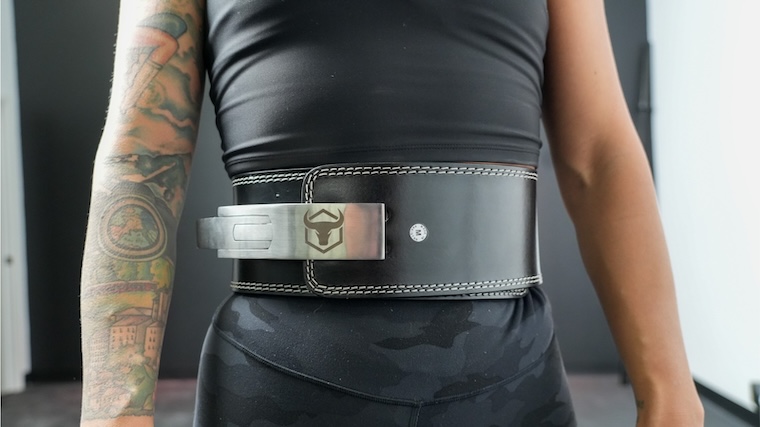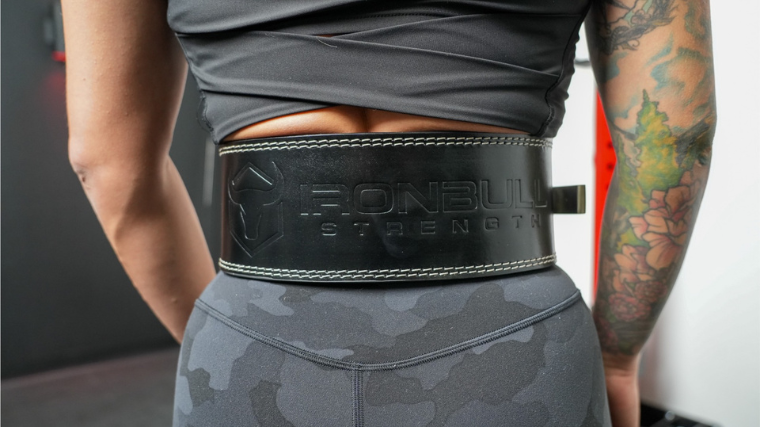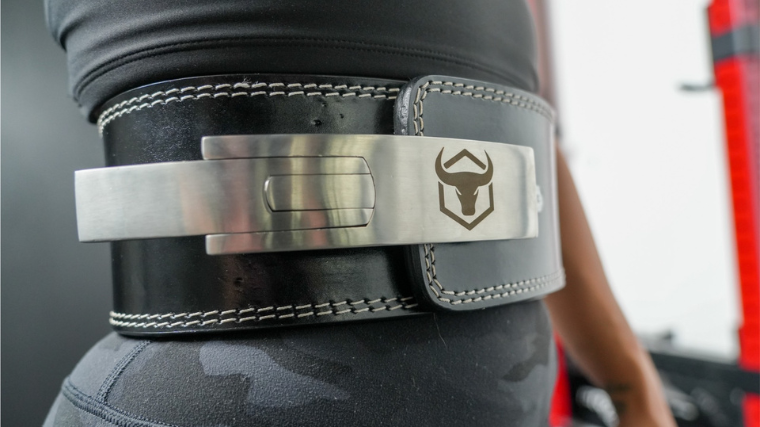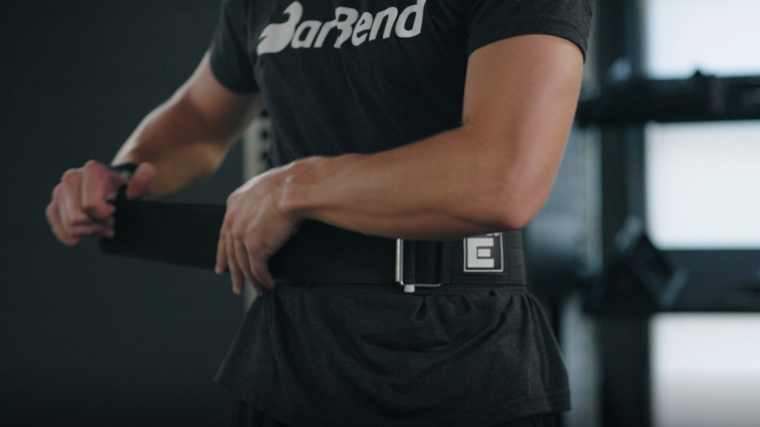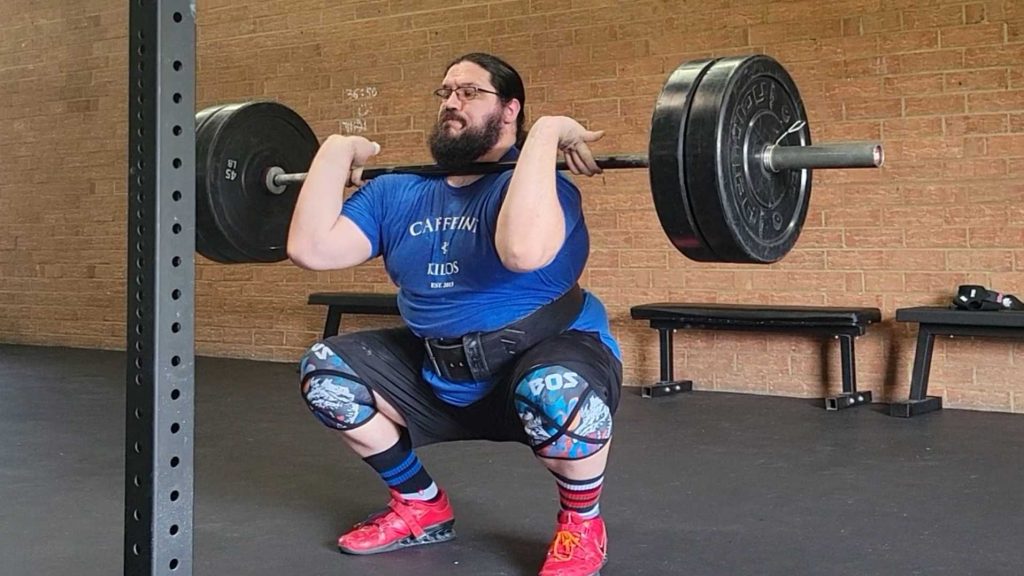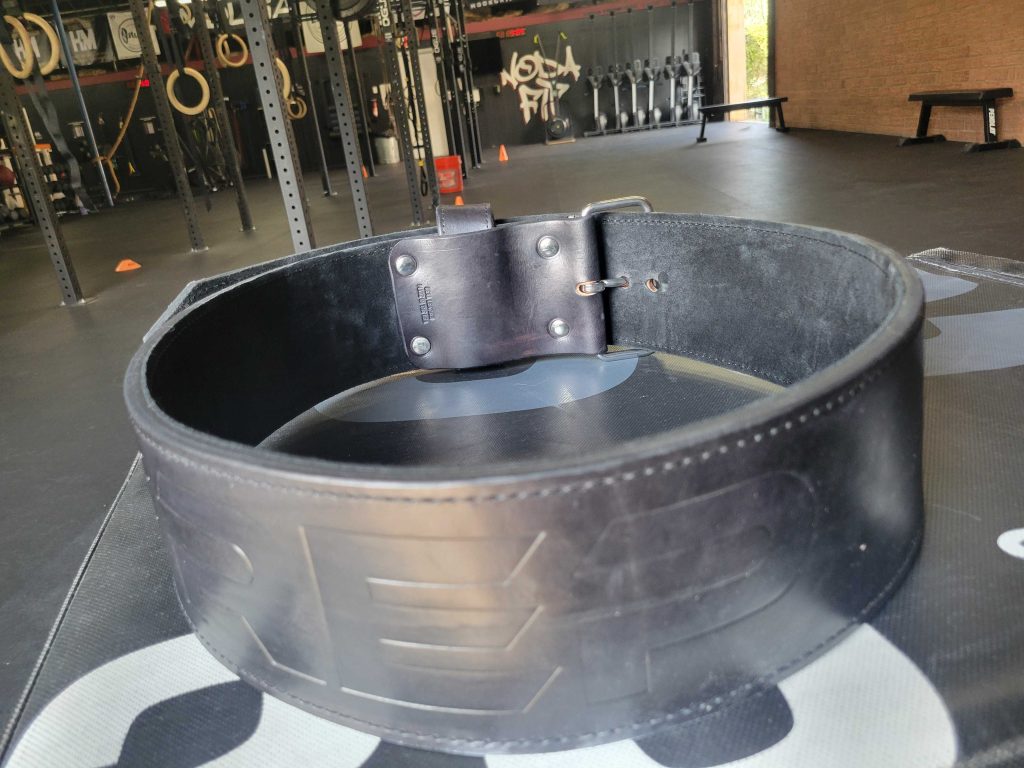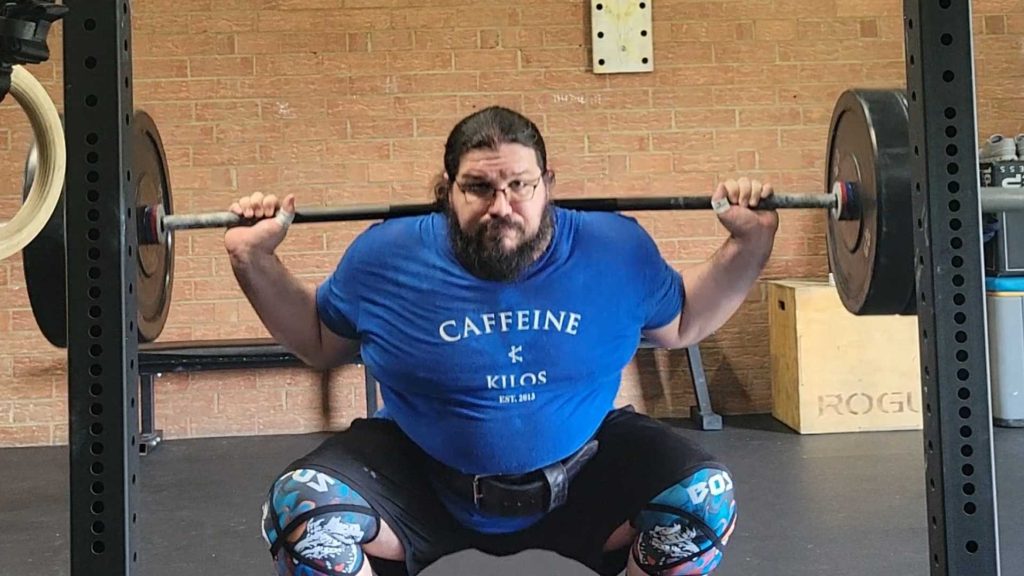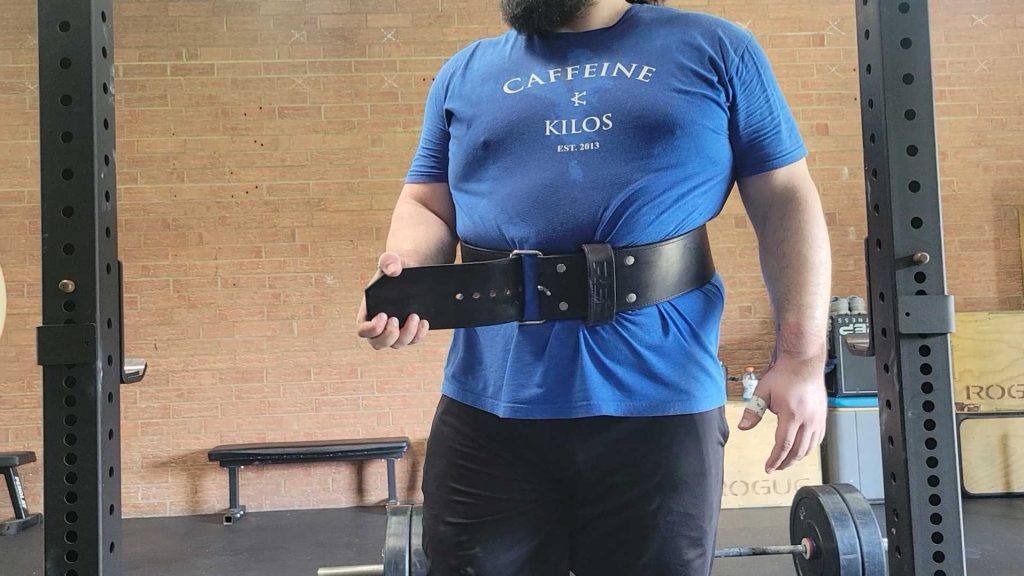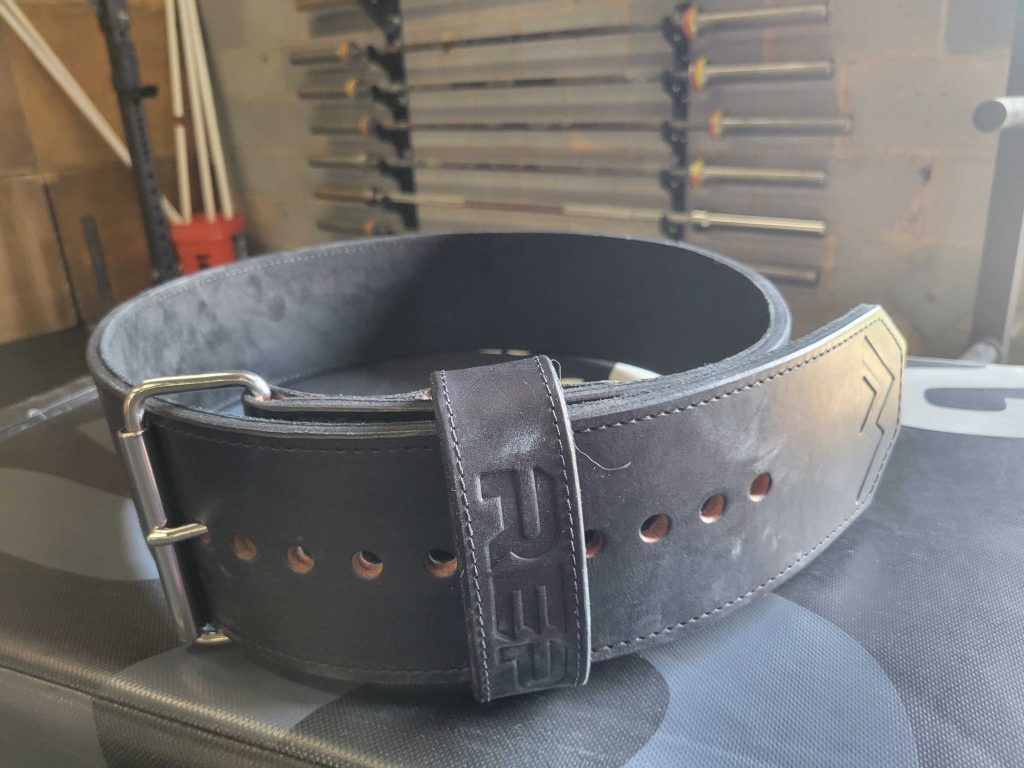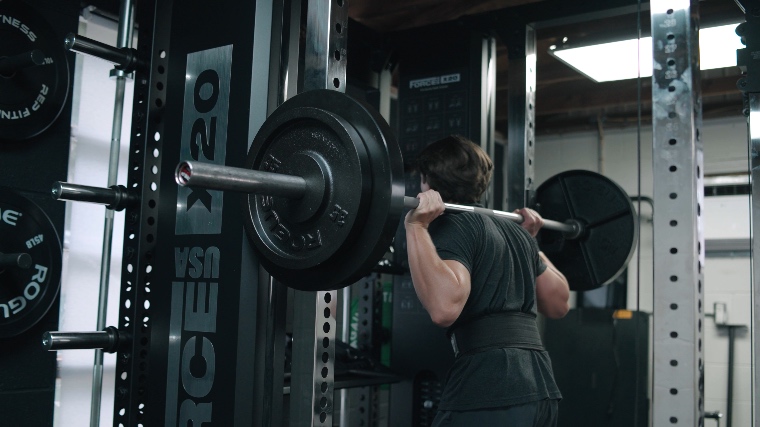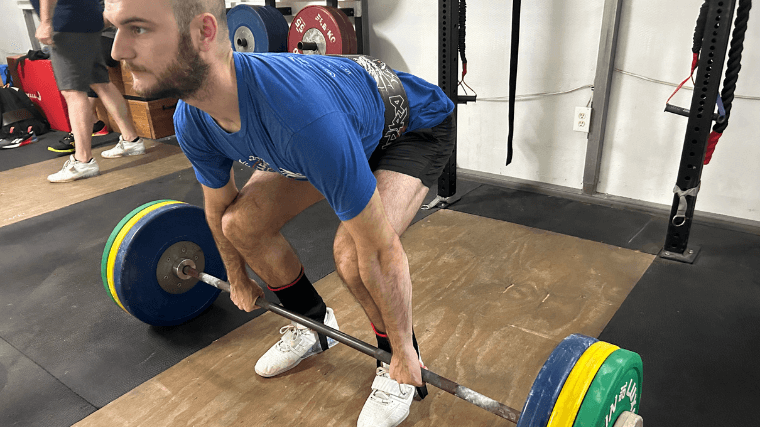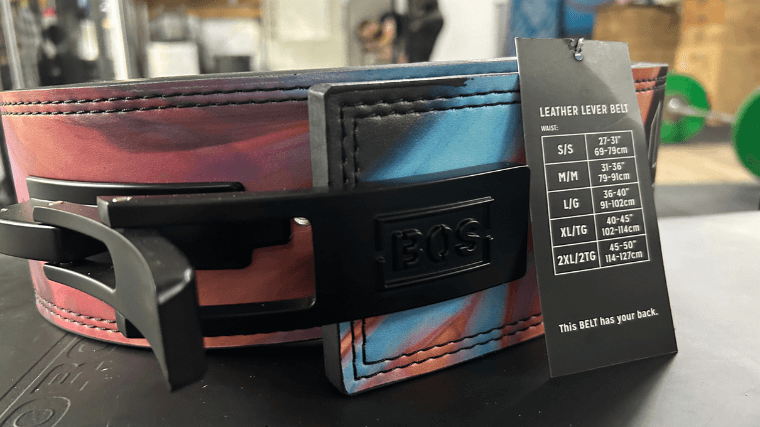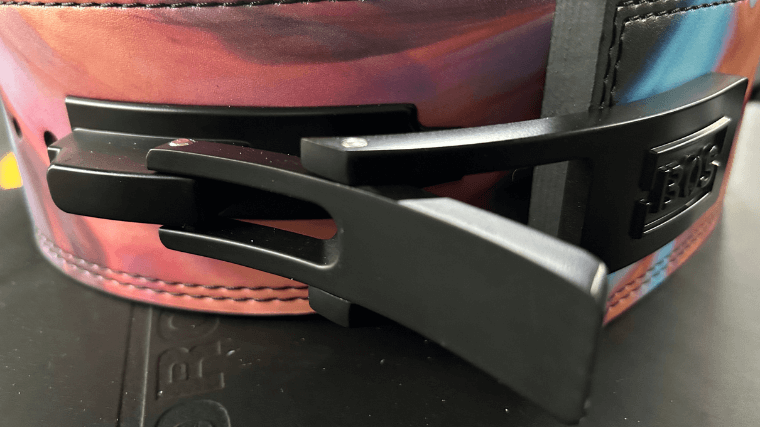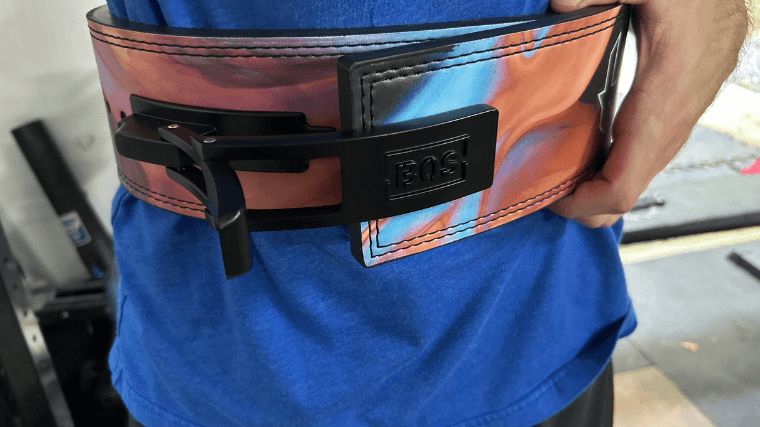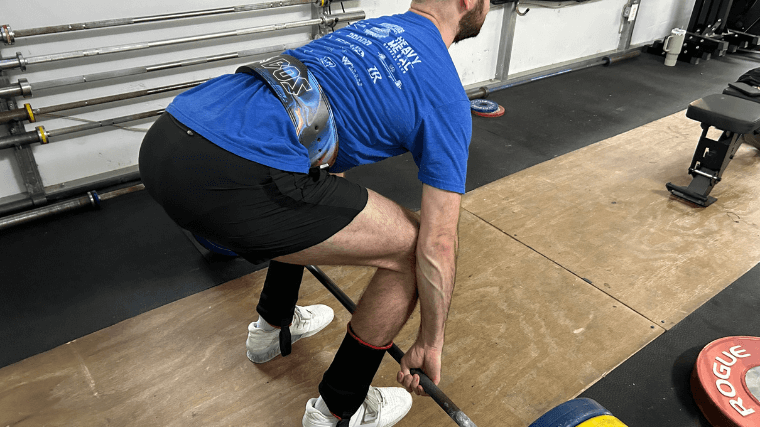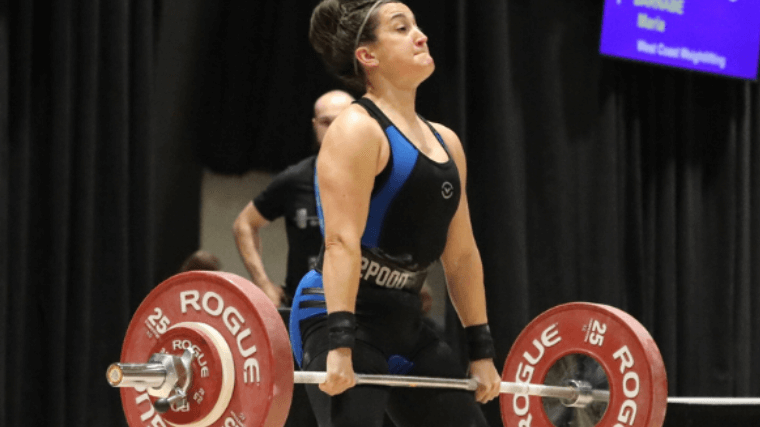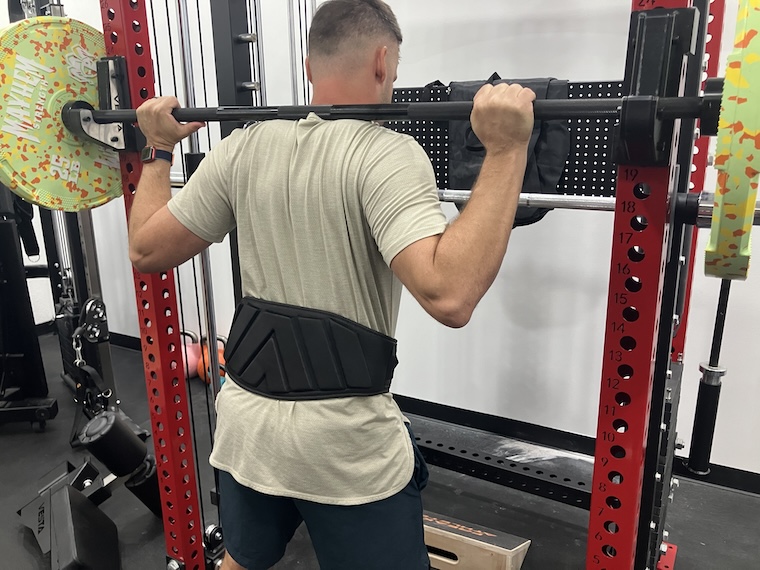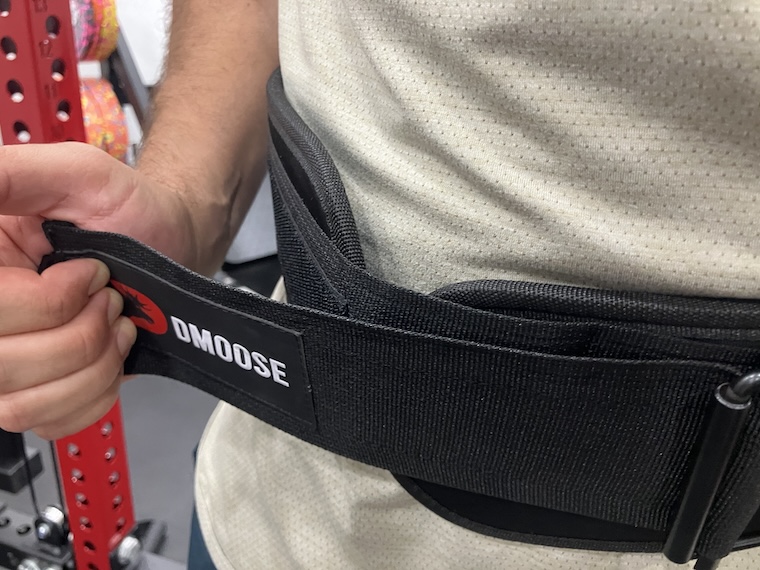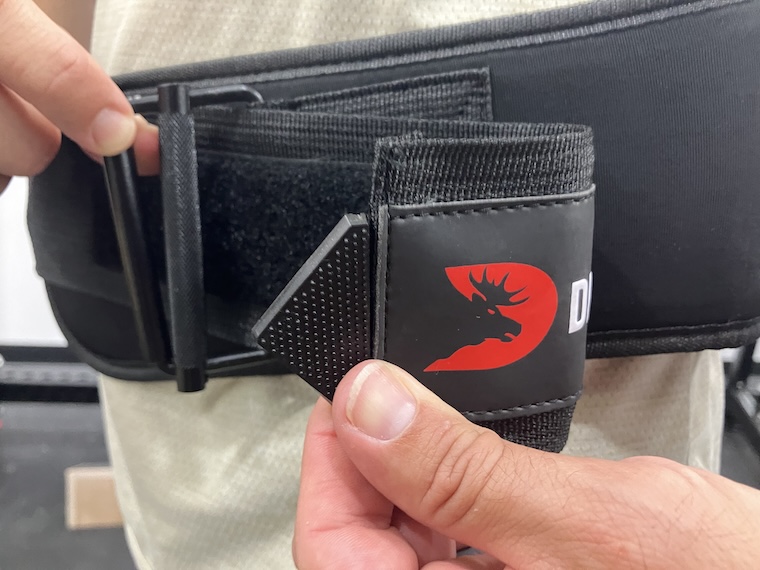When it comes to strength training, there are certain accessories that can really elevate your workouts. For example, the best weightlifting shoes can be excellent for grounding your form for epic pulls and dynamic movements. You know where you could also use some extra sturdiness? Your back and core. The best weightlifting belts can be beneficial for those looking to stabilize these key areas, particularly during heavy lifts including deadlifts, squats, snatches, and more.
According to Amanda Capritto, our expert reviewer, “While it’s totally a matter of personal preference regarding whether or not you want to wear one, weightlifting belts do have a place. Otherwise, we wouldn’t see top strength athletes don them.” It takes one gander at the weightlifting belts category, though, to realize that there are multiple designs and profiles to choose from, each with its own benefits and perks. To help you brace with the utmost support, comfort, and versatility needed for your training regimens, we’ve gotten hands-on by applying our equipment testing methodology to dozens of popular belt profiles and consulted with our in-house team to compile this round-up of the best weightlifting belts on the market today.
The Best Weightlifting Belts of 2025
- Best Weightlifting Belt Overall: Iron Bull 10mm 4″ Premium Lever Lifting Belt
- Best Weightlifting Belt for CrossFit: Element 26 Self Locking Weightlifting Belt
- Best Weightlifting Belt for Powerlifting: REP Fitness Premium Lifting Belt
- Best Weightlifting Belt for Support: Gymreapers Quick Lock Weightlifting Belt
- Best Lever Weightlifting Belt: Bells of Steel Lever Belt
- Best Weightlifting Belt for Small Waists: 2POOD 3-inch Weightlifting Belt
- Best Weightlifting Belt for Olympic Weightlifting: Eleiko Weightlifting Belt
- Most Comfortable Weightlifting Belt: Rogue Faded 4’’ Lifting Belt
- Best Weightlifting Belt for Deadlifts: Dominion 4” Leather Belt
- Best Weightlifting Belt for Beginners: Warm Body Cold Mind 4” Nylon Weightlifting Belt
- Best Budget Weightlifting Belt: DMoose Neoprene Weightlifting Belt
Best Weightlifting Belts Video Review
BarBend expert tester and certified nutrition coach Jake Herod shares our picks for the best weightlifting belts. Whether you’re looking for the best value, the best weightlifting belt for deadlifts, or the best option for beginners, we’ve got you covered.
Best Overall Weightlifting Belt: Iron Bull 10mm 4″ Premium Lever Lifting Belt
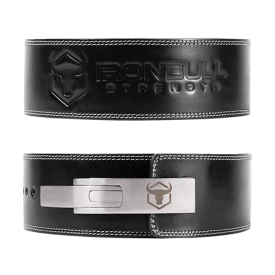
This lifting belt is made with durable, supportive leather with a non-slip, comfortable suede interior. This belt is also IPF approved, so you can use it in powerlifting training and competition.
Specs
- Price: $175
- Material: Leather
- Fastening Mechanism: Lever
- Width: 3.93”
- Available Sizes: XS-4XL
- Available Colors: Black
- Warranty: Lifetime
Best Weightlifting Belt for CrossFit: Element 26 Self-Locking Weightlifting Belt
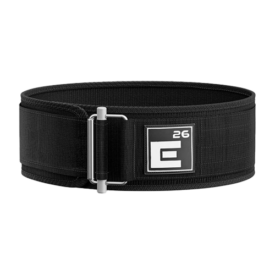
The Element 26 Self Locking Weightlifting Belt is made with 100% nylon and offers a lifetime warranty. The locking system allows users to find the perfect amount of pressure and easily lock the belt into place.
Specs
- Price: $34.97
- Material: Nylon
- Fastening Mechanism: Hook-and-loop strap
- Width: 4”
- Available Sizes: XS-XXL
- Available Colors: Black, Black Custom Patch, Miami Pink, Purple, White, Yellow, Green, Midnight Blue, Ranger Tan, Red
- Warranty: Lifetime
Best Weightlifting Belt for Powerlifting: REP Fitness Premium Lifting Belt
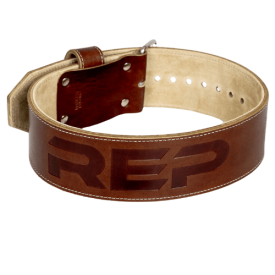
This single-prong lifting belt is constructed from high-quality, full-grain, vegetable-tanned leather from American cattle. Plus, the slightly roughed interior helps improve its stability against your skin or clothing during training — no “sliding around” as you push toward a new PR.
Specs
- Price: $209.99
- Material: Vegetable tanned leather
- Fastening Mechanism: Single-prong buckle
- Width: 4”
- Available Sizes: S-XXXL
- Available Colors: Black and brown
- Warranty: 1 year
Best Weightlifting Belt for Support: Gymreapers Quick Locking Weightlifting Belt
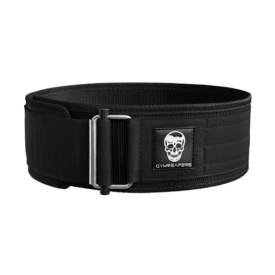
The belt is made of 100 percent nylon, and a steel roller that is built to last. The consistent four-inch size all around the belt provides even pressure to increase confidence in your core tightness, and the material isn’t prone to pinching the skin during squats or deadlifts.
Specs
- Price: $34.97
- Material: Nylon
- Fastening Mechanism: Hook-and-loop strap
- Width: 4”
- Available Sizes: XS-3XL
- Available Colors: Black, Black/Black, Green, Tan, Red, Pink, Purple, Black with Patches, Midnight Camo, Woodland Camo, White Camo, Navy, Gray
- Warranty: Lifetime
Best Lever Weightlifting Belt: Bells of Steel Lever Belt
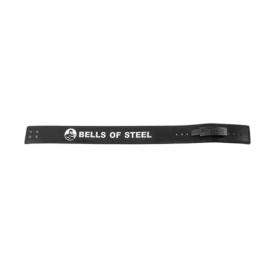
The Bells of Steel Lever Belt features a 4-inch width and 13-millimeter thickness for premium stability and support during heavy lifts. Quickly tighten or loosen your setup in-between sets across the lever locking mechanism and watch your strength totals soar with each completed rep.
Specs
- Price: $129.99
- Material: Leather and suede
- Fastening Mechanism: Lever
- Width: 4”
- Available Sizes: S-XXL
- Available Colors: Black and white or multicolored
- Warranty: 1 year
Best Weightlifting Belt for Small Waists: 2POOD 3-Inch Weightlifting Belt
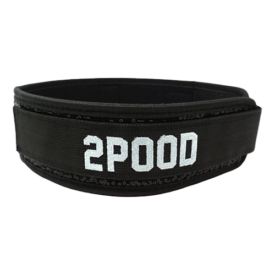
This belt from 2POOD is designed for those with a smaller frame. Sizes available are XXX-Small through Medium. The width is narrower at three inches to make the belt more comfortable for shorter torsos and help prevent digging into the ribs. Nylon material and heavy-duty velcro make this belt versatile too.
Specs
- Price: $64.99
- Material: Nylon
- Fastening Mechanism: Hook-and-loop strap
- Width: 3”
- Available Sizes: XXXS-M
- Available Colors: When Pigs Fly Danielle Brandon, Dazed & Confused, Unapologetically American, Diamond, Metamorphosis, All the Brave, Midnight Tie Dye by Jourdan Delacruz, Sunflowers, Black Magic (Sparkle), White Marble, Classy Bling Rose Gold, Operator, Pineapple
- Warranty: 1 year
Best Weightlifting Belt for Olympic Weightlifting: Eleiko Weightlifting Belt
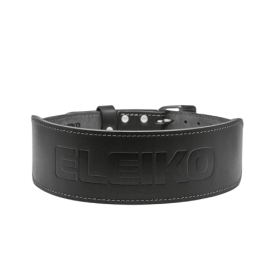
Eleiko, as a brand, is renowned for its craftsmanship, and this weightlifting belt continues to carry the torch through a well-built leather design and impressive durability. The tapered aesthetic can also promote a better sense of comfort mid-lift with less material around your hips and ribs to potentially dig into your skin.
Specs
- Price: $140
- Material: Vegetable tanned leather
- Fastening Mechanism: Double-prong buckle
- Width: 3.94”
- Available Sizes: S-XXL
- Available Colors: Black, Brown
- Warranty: 1 year
Most Comfortable Weightlifting Belt: Rogue Faded 4’’ Lifting Belt
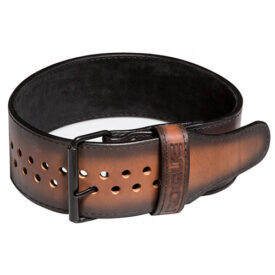
The Rogue 4" Faded Belt is the perfect option for the serious lifter that wants a belt that is going to last and provide a lot of support. It's very stable and will last a lifetime if cared for properly.
Specs
- Price: $155
- Material: Vegetable tanned leather
- Fastening Mechanism: Single-prong buckle
- Width: 4”
- Available Sizes: XS-XL
- Available Colors: Brown
- Warranty: Lifetime
Best Weightlifting Belt for Deadlifts: Dominion 4” Leather Belt
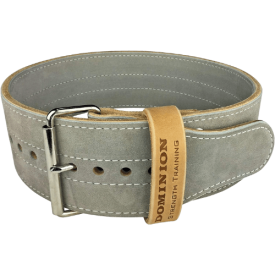
The top-grain leather and 4-inch design of this Dominion lifting belt make it an easy go-to for advanced athletes wanting the highest level of support for training. Plus, the single-pronged buckle design can be easy to master as you look to find that premier sense of tension for bracing techniques.
Specs
- Price: $175
- Material: 100% top-grain cow leather
- Fastening Mechanism: Single-prong buckle
- Width: 4”
- Available Sizes: S-XL
- Available Colors: Gray
- Warranty: Lifetime
Best Weightlifting Belt for Beginners: Warm Body Cold Mind 4” Nylon Weightlifting Belt
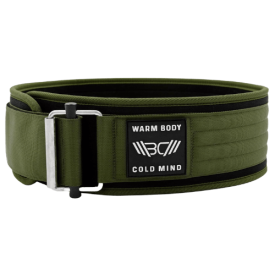
The Warm Body Cold Mind 4-Inch Nylon Weightlifting Belt can be an excellent starting position for novice strength athletes thanks to its hook-and-loop strapping system and comfortable yet rigid nylon makeup. The seams sit comfortably across your hips and ribs, too, allowing you to fine-tune your form without compromise.
Specs
- Price: $31.99
- Material: Nylon
- Fastening Mechanism: Hook-and-loop strap
- Width: 4”
- Available Sizes: S-XXL
- Available Colors: Black, Khaki, Navy, Pink
- Warranty: 14-day returns
Best Budget Weightlifting Belt: DMoose Neoprene Weightlifting Belt
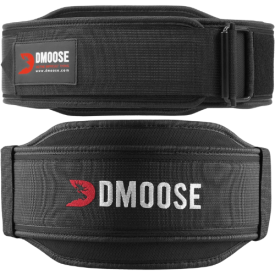
Coming in at under $25, the DMoose Neoprene Weightlifting Belt can be a great budget option for athletes. Additionally, the neoprene design can help disperse any accumulated perspiration, keeping your midsection comfortable and chafe-free as you move through your training sessions.
Specs
- Price: $24.99
- Material: Neoprene
- Fastening Mechanism: Hook-and-loop strap
- Width: 4” (Adjustable to 6”)
- Available Sizes: S-XL
- Available Colors: Black, Gray, Gray Camo, Navy Blue, Ranger Green
- Warranty: Yes (unclear time frame)
How We Tested and Chose the Best Weightlifting Belts
The BarBend team is made up of competitive athletes, certified personal trainers, and lifelong fitness enthusiasts. To make our list of the best weightlifting belts, we got hands-on with 25 different profiles from top brands, using a multi-point methodology to rate each profile on a scale of 1 (lowest) to 5 (highest) to determine our top picks. Below are some of the categories and components we looked at to make our list.
For further information on how we trial and test the products chosen for this guide and more, be sure to read the BarBend Equipment Testing Methodology page.
- Stability: The stability and support of your weightlifting belt can vary depending on your training needs, as well as the material your profile is constructed from. We looked at weightlifting belts constructed of rigid leather that can typically deliver extra support, as well as more flexible textiles like nylon and polyester, to see how much rigidity we felt across our abdomens and lower back, all while highlighting specific disciplines that could benefit from the level of stability at play.
- Mobility: Your weightlifting belt should work with your body’s range of motion, meaning you should still be able to move around without any pinching or rubbing that can compromise your lifting form. As such, we examined how versatile these belts could be, especially while wearing them for dynamic movements such as the snatch or clean & jerk.
- Comfort: Comfort is always key when looking at fitness equipment, and those PR attempts could be squashed quickly if you’re wearing a lifting belt that’s uncomfortable across your midsection. We looked for belts offering a good next-to-skin feel across the interior, as well as profiles featuring rounded edges that were less aggressive against our ribs and hips during movement.
- Quality: High-quality belts can sometimes cost as much as the best cross-training shoes, so you’ll likely want to opt for a profile that won’t break down after just a few uses. In testing, we made note of each silhouette’s durability and construction, highlighting when the materials used proved to be resilient enough for repeated wear, as well as components that may need further attention to help expand the longevity.
- Customer Reviews: In addition to our hands-on testing, we also looked at any available customer reviews to get a better understanding of each best belt’s quality and performance. After all, a profile showcasing multiple positive reviews is likely to carry that feedback for a reason, so we felt it was worth looking at what the general population has to say about our chosen picks in addition to our own research and findings.
How to Choose a Weightlifting Belt
There are a few key components worth considering when purchasing this new addition to your home gym.
Your Budget
There is a big price range in this market, which means there’s something there for everyone. Some of these belts are handmade with very high-quality materials, and some are designed to be more mass market. At the upper end, you can be spending nearly $150 or more if you get into customization, but if you take care of it, it should last you a lifetime. On the lower end, you can get down to $20, but we wouldn’t expect the same lifespan or security out of those.
Design
The design of a lifting belt usually isn’t going to be a deal-breaker. Belts tend to be functional rather than aesthetic choices, but at the same time, you may have a preference for a more or less traditional design. In that case, a lot of belts offer different color and style options, and there are some that you can fully design and customize.
Training Preferences
The type of lifting you do on a regular basis can be quite impactful on your weightlifting belt options. For example, powerlifters and strongmen lifting heavy weights may prefer a more rigid belt that locks in their midsection for easier bracing and support. Olympic lifters, CrossFit athletes, and bodybuilders can still benefit from a lifting belt, but the needed support may be less important, as there needs to be some emphasis on mobility to accommodate more dynamic movements.
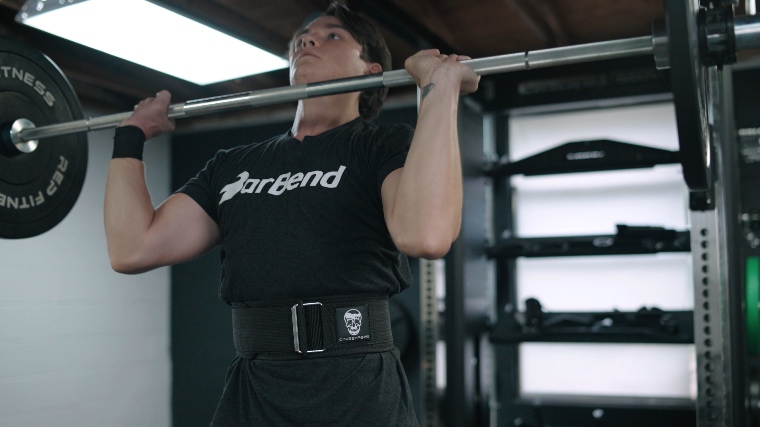
Additionally, Capritto states that your training intensity may also influence your decision to opt for a weightlifting belt. “Do you regularly lift weights, and do you regularly lift at near-maximal loads? If you answered yes to one or both, then a weightlifting belt might be for you. If not, you probably don’t need to spend your money on one, as they don’t provide a significant benefit for lightweight, high-volume strength training or cardiovascular exercise.”
Belt Construction
Your belt construction should also be reviewed before opting for a specific profile. “Leather weightlifting belts can provide a higher level of rigidity and support than nylon or other textiles, but will require a break-in period and may be too rigid for more dynamic movements like you’d see in CrossFit or Olympic weightlifting. In fact, research has shown that lifting belts restrict trunk motion and shift more of the lifting load to the hips, altering how your body distributes effort during complex lifts. (1)
Additionally, you should consider whether you prefer a straight belt or tapered silhouette. Straight belts can be excellent for providing a uniform sense of support across your entire midsection, but can be prone to comfort issues as the edges potentially dig into your hips, sides, and ribs. Tapered belts, on the other hand, can be more comfortable, but may not offer the same stability.
Fastening Mechanism
Lifting belts typically offer three fastening styles to help you achieve the proper fit: pronged buckles, levers, or hook-and-loop straps. Prong-style buckles can be an intuitive option for those wanting a setup that’s akin to their traditional dress belt. The prongs slide into one of the available adjustable holes and can provide a good sense of lockdown.
However, the level of adjustability is limited by your hole spacing and the amount of holes, so fitment can be less taut for some athletes.
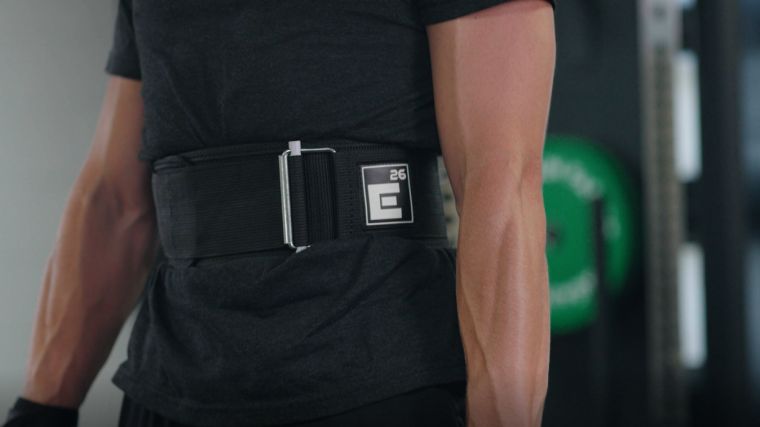
Lever belts operate as a cinch across the middle, creating a sense of stability that can be easily flung open or closed before training with no sense of fine-tuning. This style of lifting belt can be great for powerlifters and strongmen looking to achieve a repeatable bracing setup before hitting the podium.
However, intra-workouts adjustments can be few and far between, as moving the lever mechanism can require the use of hand tools and resetting some set screws — not the most appealing process if you’re wearing a pair of the best wrist wraps or trying to cool down after a heavy set.
Hook-and-loop straps are the most customizable fastening mechanism, allowing you to tighten the belt to your liking each and every time you cinch in for training. These belts can also be worthwhile for athletes that prefer to train with additional layers on, as finding that ideal support is more achievable given the larger array of locking positions.
In the end, though, be sure to choose a fastening mechanism that you’re most comfortable with in terms of mid-workout adjustments and how consistent you want your lockdown to be.
Price
How much your weightlifting belt costs can vary highly depending on your material of choice. For example, leather lifting belts, which often use a pronged or lever buckle, tend to cost around $145. Belts using a hook-and-loop strap can be cheaper, averaging around $40, but may feature less support given the base material’s more flexible nature. Be sure to look for a weightlifting belt that provides enough support for your needs while also fitting neatly within your fitness budget.
Benefits of Weightlifting Belts
Weightlifting belts can be a fantastic addition to your gym bag, but their performance benefits aren’t always necessary. After all, a lifting belt should not be used as an excuse for poor lifting form. When used correctly, below are some of the pros of lifting belts that can come from this assistive fitness accessory.
- Midsection Bracing: According to Amanda Capritto, our expert reviewer, “Weightlifting belts reinforce core bracing. They provide the athlete with something to brace against, which increases tension in the midsection under the duress of a heavy barbell.
- May Decrease Risk of Injury: “The aforementioned midsection bracing could potentially reduce one’s risk of spinal injury, but research is lackluster in this area,” says Capritto.
- Improved Confidence: In addition to the better bracing surface, strapping into a weightlifting belt before your next PR can also serve as a sense of motivation. The act of finding your lockdown, ensuring your back and midsection is supported, and ultimately grabbing hold of the barbell can be enough mental fuel to help you crest over into untapped potential when it comes to heavy training.
- Potentially Heavier Sets: When used correctly, weightlifting belts can also be a means to lift heavier weights in training. A 2024 study on deadlift performance found that belts improved one-rep max strength, increased reps at lighter-than-max weights, and enhanced force production (a.k.a. how quickly and powerfully an athlete can push or pull a weight load)—making them a practical aid for athletes pushing near their limits (2). The added structure around your back and abdomen can allow you to push past your body’s limitations, giving you the support necessary to lift heavier totals than you would without the added gear — think of a weightlifting belt as your personal exoskeleton for training at near-maximal or maximal loads.
Different Types of Weightlifting Belts
There are multiple types of belt designs, but from our tests and reviews, almost every belt tends to technically fall into two major categories: cylinder and tapered. Each belt has different design attributes to benefit certain types of multi-sport strength athletes.
Straight Lifting Belt
This style belt is the same width at every part and covers the torso equally. They are designed to support the back, abdomen, and sides evenly with the same amount of material. Powerlifters and strongman athletes typically sway towards these belts.
Tapered Weightlifting Belt
This belt is often favored by Olympic lifters and recreational athletes because it provides the posterior with extra width but thins out towards the abdomen. The skinnier portion over the abdomen allows the torso to remain mobile while providing support without being too obtrusive.
How Much Do Weightlifting Belts Cost?
Your lifting belt’s price can vary greatly from one silhouette to the next, especially when comparing belts constructed from different materials. On average, you can expect to pay roughly $40 for a synthetic belt made from nylon, polyester, or another material. Leather belts, on the other hand, can cost roughly $145. For an easier price comparison amongst belts included in this round-up, be sure to look at the chart below.
| Best Weightlifting Belt Overall | Gymreapers Quick Locking Weightlifting Belt | $34.97 |
| Best Lever Weightlifting Belt | Iron Bull 10mm 4″ Premium Lever Lifting Belt | $175 |
| Best Weightlifting Belt for CrossFit | Element 26 Self Locking Weightlifting Belt | $34.97 |
| Best Weightlifting Belt for Powerlifting | REP Fitness Premium Lifting Belt | $209.99 |
| Best Weightlifting Belt for Support | Bells of Steel Lever Belt | $129.99 |
| Best Weightlifting Belt for Small Waists | 2POOD 3-inch Weightlifting Belt | $64.99 |
| Best Weightlifting Belt for Olympic Weightlifting | Eleiko Weightlifting Belt | $140 |
| Most Comfortable Weightlifting Belt | Rogue Faded 4’’ Lifting Belt | $155 |
| Best Weightlifting Belt for Deadlifts | Dominion 4” Leather Belt | $175 |
| Best Weightlifting Belt for Beginners | Warm Body Cold Mind 4” Nylon Weightlifting Belt | $31.99 |
| Best Budget Weightlifting Belt | DMoose Neoprene Weightlifting Belt | $24.99 |
Best Weightlifting Belts FAQs
Do I need a weightlifting belt?
If you’re a recreational lifter, then you don’t need a lifting belt for success. However, that doesn’t mean it can’t be useful. For example, if you plan to push your limits and train heavy consistently, then a belt can be a useful tool based on your goals and needs to ensure your torso is receiving enough support.
How tight should a weightlifting belt be?
When tightening your weightlifting belt, you want to shoot for a fit that’s rigid enough to provide support yet not so tight that it compromises your breathing. A good check to this is after securing your fastening mechanism, take one finger and try to slide it in between your stomach and belt. If you can do this without forcing your digit into the seam, it’s likely taut enough for training.
Should beginners use a lifting belt?
It depends. If you’re a true beginner, then you should conquer form and mechanics first before reaching for a belt. At times, lifters can reach for a belt a bit too soon in their career before they nail their mechanics. On the flip side there are occasions when a beginner may need a belt. For example, if you’re a beginner strength athlete and you’re working with a coach and they advise you to grab a belt, then doing so can help with the specificity of your sport.
When should you wear a lifting belt?
A lifting belt can be worn during maximal lifts, heavy sets, and strength-sport-specific movements. While it’s certainly not a must in these occasions, these are the times when athletes will reach for a belt to support performance with the creation of additional intra-abdominal pressure.
What does a weightlifting belt do?
Weightlifting belts provide added stability to your core during lifts by increasing the pressure in your abdomen. Basically, by pushing your belly against your weight belt, it presses back against your belly and lower back, adding stability to the area. This is key because your core and lower back are the foundation of your lifts — if your back loosens up and starts to bend, you can fail your lift or, even worse, injure yourself in the attempt.
How do you wear a weightlifting belt?
There are two main rules when it comes to getting the most out of your weightlifting belt. First, you’ll want to wear it around your stomach, not your waist. If you wear it too low, you can’t brace your stomach against it, and it won’t do you any good. Second, tighten that belt as much as you can without having it restrict your breathing. If you have any slack in the belt when you push your stomach out, it’s way too loose and won’t provide you with any support.
References
- Sparto, P. J., Parnianpour, M., Reinsel, T. E., & Simon, S. (1998). The effect of lifting belt use on multijoint motion and load bearing during repetitive and asymmetric lifting. Journal of Spinal Disorders, 11(1), 57–64. https://pubmed.ncbi.nlm.nih.gov/9493771/
- Zeidan, A., Rogacion, C., Caragao, M., Kraft, B., Valenzuela, K. A., & Schick, E. E. (2024). Pilot study: The effect of weight belts and lifting straps on conventional deadlift performance. International Journal of Exercise Science: Conference Proceedings, 14(4), Article 70. https://digitalcommons.wku.edu/cgi/viewcontent.cgi?article=8163&context=ijesab
